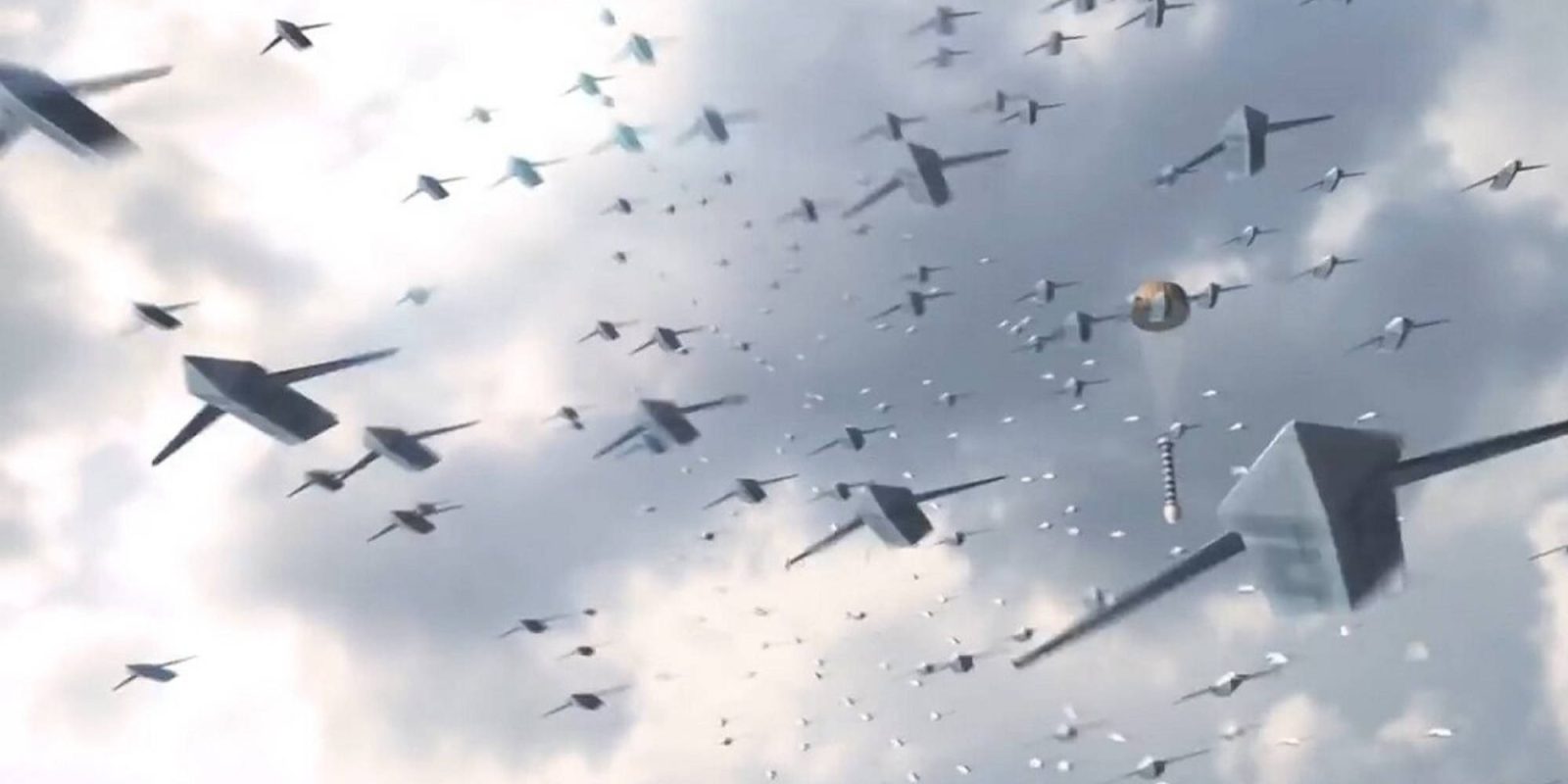
If the war in Ukraine has taught the world anything, it’s that UAVs have proven their utility in waging war today, and demonstrated their promise for larger deployment in future conflicts. And that evolution doubtless explains why the Pentagon’s Defense Advanced Research Projects Agency (DARPA) is now endeavoring to create super swarms of drones capable of overwhelming enemy defense systems, and attacking targets they identify once past those.
DARPA last month updated an announcement initially published late last year, calling for bids from companies to develop large swarms of drones to perform a variety of military missions, including swamping complex, tech-based defense systems – then autonomously seeking out designated targets with onboard munitions. While military operations using multiple UAVs have thus far limited the number of craft involved to single or double digits, the DARPA program seeks to deploy up to 1,000 drones – possibly more – in so-called swarm-of-swarms.
The idea behind the DARPA program is to deploy huge numbers of drones in swarms whose sheer size, reinforced with specialized onboard jamming tech, can scramble, disrupt, and simply burst what are known as Anti-Access/Area Denial (A2/AD) defense bubbles.
Read: Ukraine’s $540 million drone budget highlights UAVs’ critical role in defense efforts
According to the DARPA document on the program, such assets would address what – with a nod to Ukraine – no longer seems such a far-fetched scenario.
“Today, our peer-state adversaries could invade their neighbors with little warning given their
time-distance-mass advantage,” the DARPA call for bids reads. “Adversary A2/AD bubbles with sophisticated air defense, indirect fires, precision weapons, and Intelligence, Surveillance, and Reconnaissance (ISR) capabilities would severely limit Joint Service and Coalition operations under the bubble.”
To pop such balloons, the Pentagon is envisaging swarms of air, ground, and marine drones sufficiently large to overwhelm enemy A2/AD systems. Once that’s done, the plan calls for onboard artificial intelligence capabilities to be smart enough to take out high-value assets the defeated defenses were intended to protect.
Craft tested thus far in swarm formations, DARPA says, “function independently in A2/AD environments, but have yet to achieve the large-scale, dynamic autonomy necessary to be effective against a peer- state adversary’s A2/AD capabilities.”
To make that latter objective possible, the Pentagon is ready to pay $75 million companies able to achieve it. DARPA has dubbed the drone mega-swarm program the “Autonomous Multi-Domain Adaptive Swarms-of-Swarms” (AMASS), and is looking to have a corresponding system under testing in coming years.
Its overview describes the objective as follows:
AMASS will create the ability to dynamically command and control (C2) unmanned, autonomous swarms of various types (i.e., swarms-of-swarms) with a common C2 language for Theatre-level counter-Anti-Acces/Area Denial (A2/AD) capabilities. The two-phase program (Phase 1 Base and Phase 2 Option) will be experimentation and scenario focused, including incremental and progressive development, integration, and demonstration of capabilities with increasing quantities of different swarms and complexity of mission scenarios.
Read: DARPA launches Phase Two of Manta Ray UUV maritime drone project
Army planners are presumably chuffed at the government freeing up sufficient funds to produce automated drone swarms able to overwhelm enemy A2/AD defense bubbles, then be tech-savvy enough to know which suddenly exposed assets – including human targets – to whack on their lonesome.
But many critics outside the military – including kitchen table ethicists already concerned about the Pandora’s box of releasing AI tech to replace human intervention that people may never take control back of again – aren’t so sure AMASS sounds either so neat, or smart.
FTC: We use income earning auto affiliate links. More.



Comments